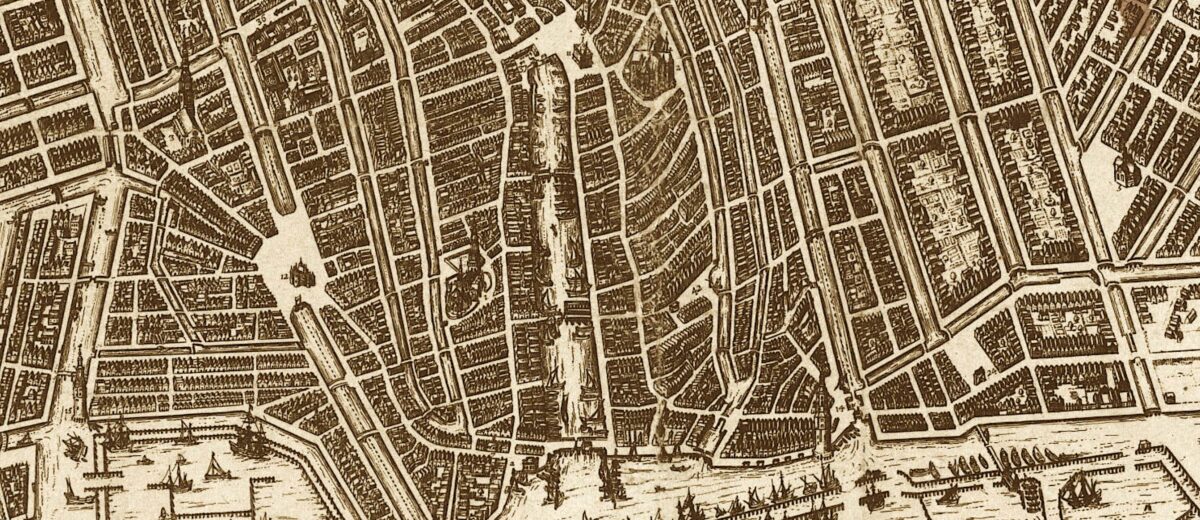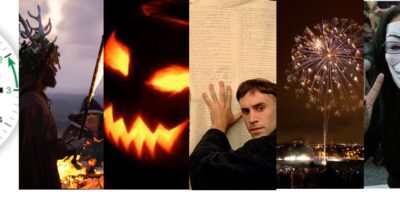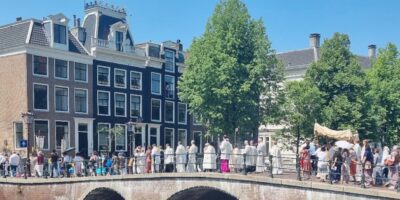Legendary kiwi singer Steve Apirana is in Amsterdam this weekend to participate in a canal boat tour focusing on the spiritual history of the city.
This event commemorates the 400-year anniversary of the Noorderkerk, a Protestant Reformed church built soon after the city embraced the Reformation and began to explode in wealth, population and urban spread.
After his first visit to the city several years ago, Steve wrote a song entitled ‘Amsterdam, city of a thousand contradictions’. When conducting canal tours over recent years, I have sometimes played the song over the boat’s sound system before comparing Amsterdam to Rembrandt’s use of chiaroscuro, contrasting light and darkness in his paintings.
Now Steve and his wife Ainsley, well-known from festivals, concerts and gigs across New Zealand and Australia, will sing these words live:
Amsterdam, City of a thousand contradictions
Amsterdam, A place where light and darkness grow together
A beautiful masquerade performing before your very eyes
Oh, the masters paint a pretty face But can’t erase the desolation inside
Oh, what I would give you Amsterdam To ease the strain and sadness you’re failing to hide
Amsterdam, Remember when we used to dance together
Amsterdam…?
You walked from me long ago promising never to return
Oh, but now and then you look my way
And I can see a little spark still remains
Few think of Amsterdam as a spiritual capital, a place of pilgrimage, where much of the city was once devoted to prayer communities and social ministries we know as cloisters. But before the Reformation, monasteries made up about a third of the old city area. The nineteen monasteries inside the city walls were strongly influenced by the most popular Christian devotional of all time, The imitation of Christ by Thomas a Kempis, and by the Modern Devotion movement of which he was part.
A lane with the name Gebed Zonder End (Prayer without end) reminds us of the constant intercession of these communities. The bells of the church towers of the Oude Kerk (1306) and the Nieuwe Kerk (1409) directed the prayer rhythm of daily urban life. Even today the carillon of the Oude Kerk regularly plays ‘The Lord’s my Shepherd’ in the heart of the Red Light District!
In 1345, a miraculous event was declared to have taken place in the city which is still called the Miracle of Amsterdam. Protestants found the story bizarre but it led to thousands of pilgrims visiting Amsterdam to be part of a silent walk through the city centre – swelling to 80,000 at its height – to commemorate this event. Even today these annual night-time vigils still attract thousands.
The most famous pilgrim was Emperor Maximillian from Austria, who reportedly experienced a healing while on this pilgrimage. In gratitude he granted the city the right to use his crown on its coat of arms – centuries before the Netherlands became a monarchy. His crown also adorns the tower of the famous Westerkerk where Rembrandt is buried.
Amsterdammers call the transforming moment in 1578 when their city decided to embrace the Reformation the Alteratie, when they bundled their Catholic city fathers into boats and sent them into exile. Led by William of Orange, the Dutch rebelled against their Catholic Spanish rulers and for eight decades fought for their freedom, finally recognised in 1648. Overnight, the Alteratie saw the secularisation of all the city’s monasteries into libraries, orphanages, old peoples homes, armouries and the headquarters of the VOC, the East Indies Company, (in 1602). Many of the original buildings still stand.
This was the first step in a long process of secularisation, the fruit of which we see all around us today in Amsterdam – and the modern world. While the Reformation recovered important biblical truths, it also triggered the search for freedom and human autonomy for which Amsterdam has become famous. As the Dutch led the way in shipping, map-making, navigation, trade, art and science, new ideas about God, man and the cosmos were conceived by Amsterdam-based thinkers like Descartes, Locke and Spinoza, midwives to the Enlightenment. God was no longer expected to turn up in the Eucharist. He became the absent deity of Deism, and eventually deemed not to exist. The cosmos was disenchanted, emptied of angels and demons. Man was now his own master.
Amsterdammers, then as now, faced the choice between freedom to do what we want (exclusive humanism and licentiousness), or freedom to do what we ought (liberty under God). Today Amsterdam graphically displays the contrast beween these two options.
The ‘Golden Age’ may have brought unprecedented wealth and freedom to the Dutch four hundred years ago, but not for the 500,000 Africans and Asians enslaved to make that happen. Many remain wilfully blind towards today’s slave trade: the human trafficking supporting the so-called ‘normal profession’ of prostitution.
Yet many churches and Christian ministries are also at work in the Red Light District, and across the city, addressing the ‘desolation inside’, as Steve sings it, to fan that ‘little spark that still remains’.
Till next week,



